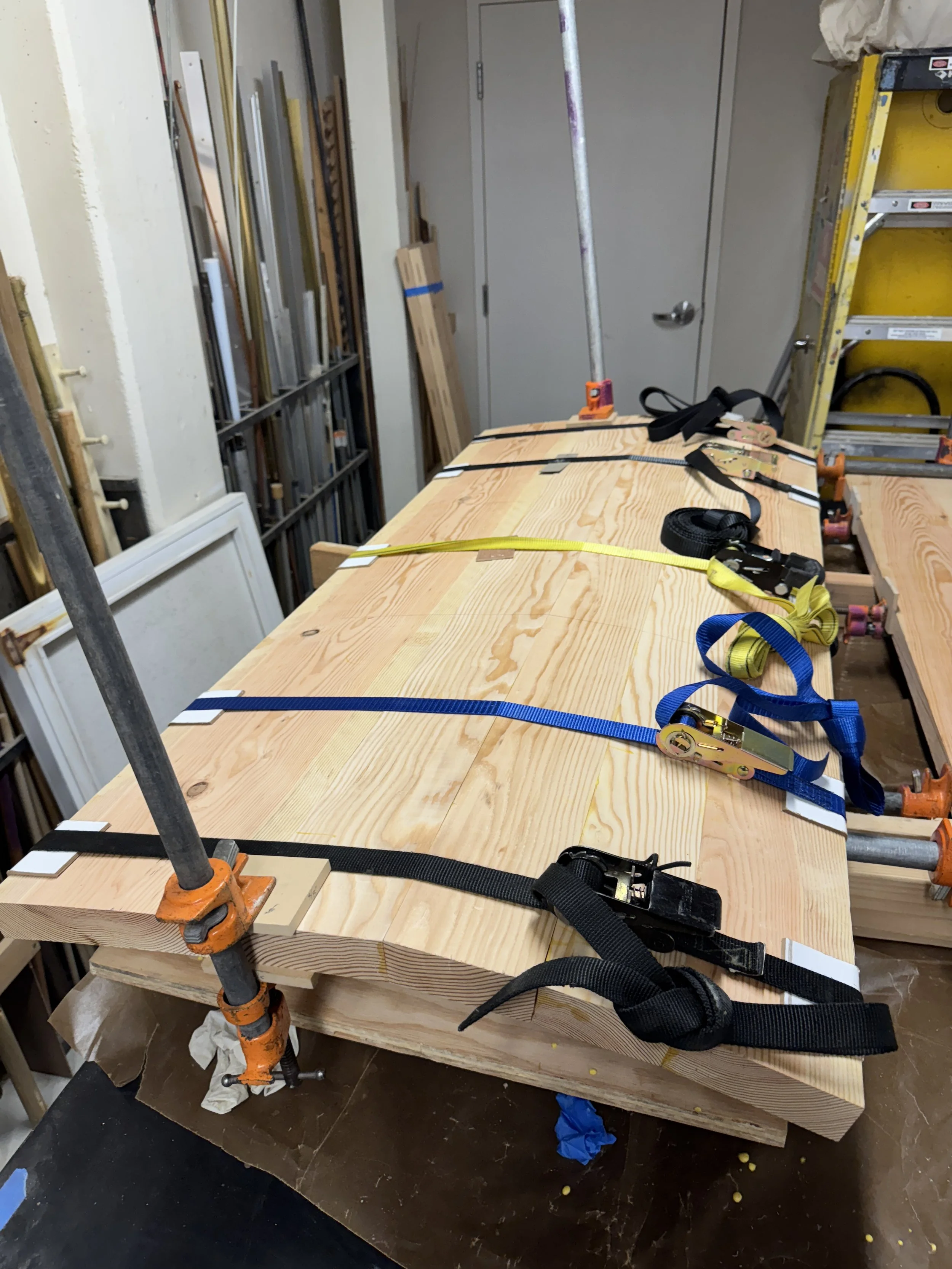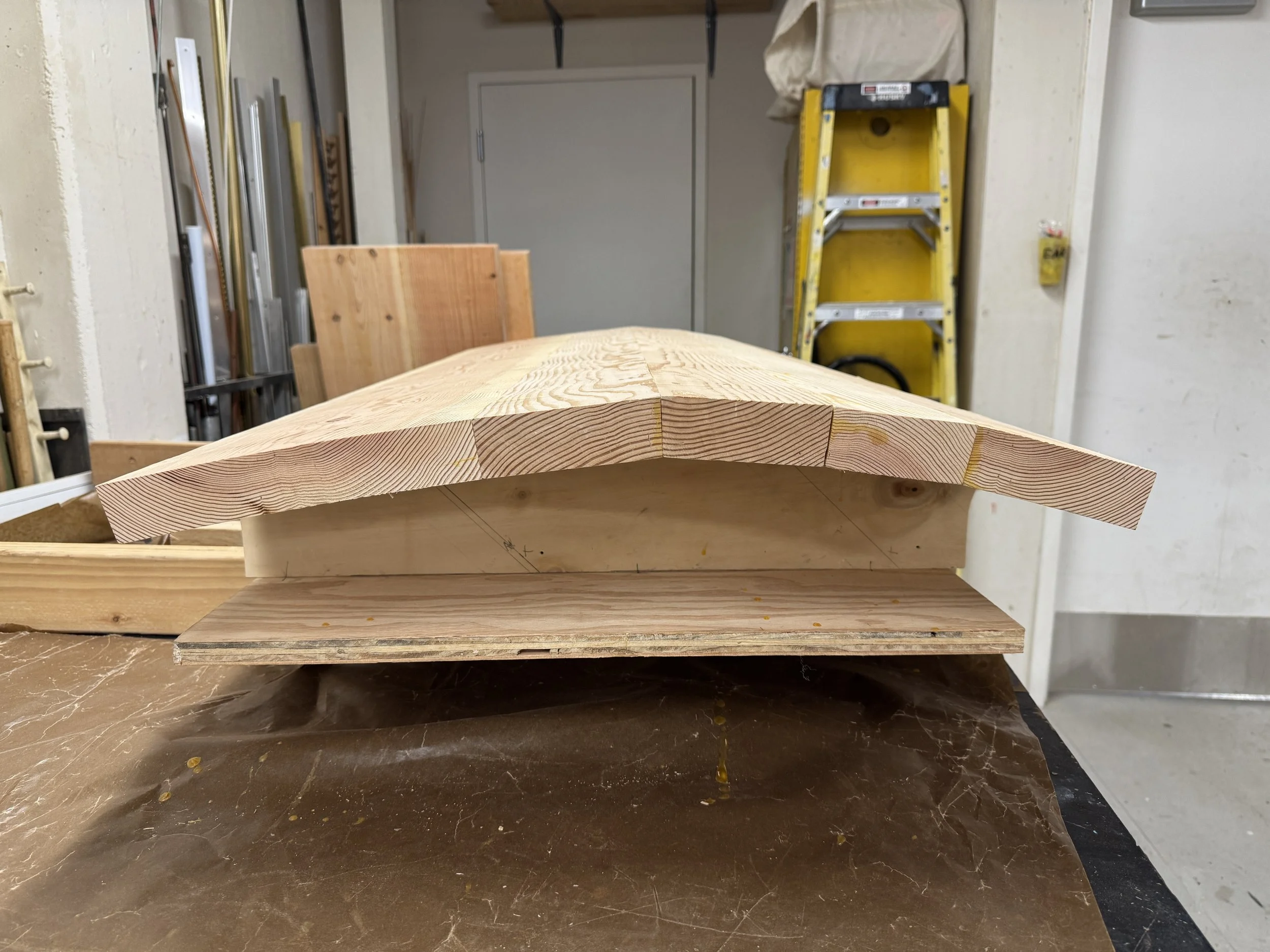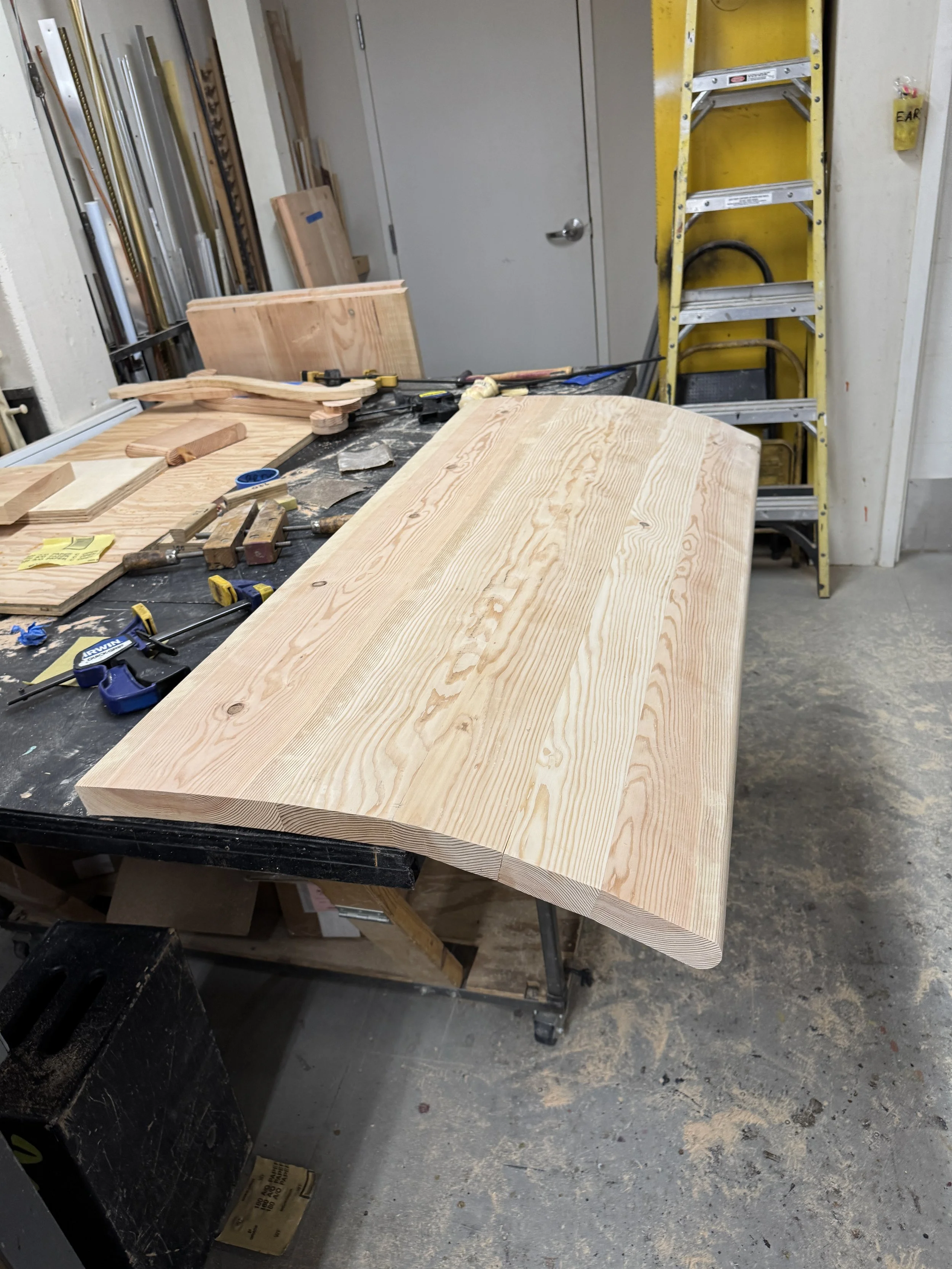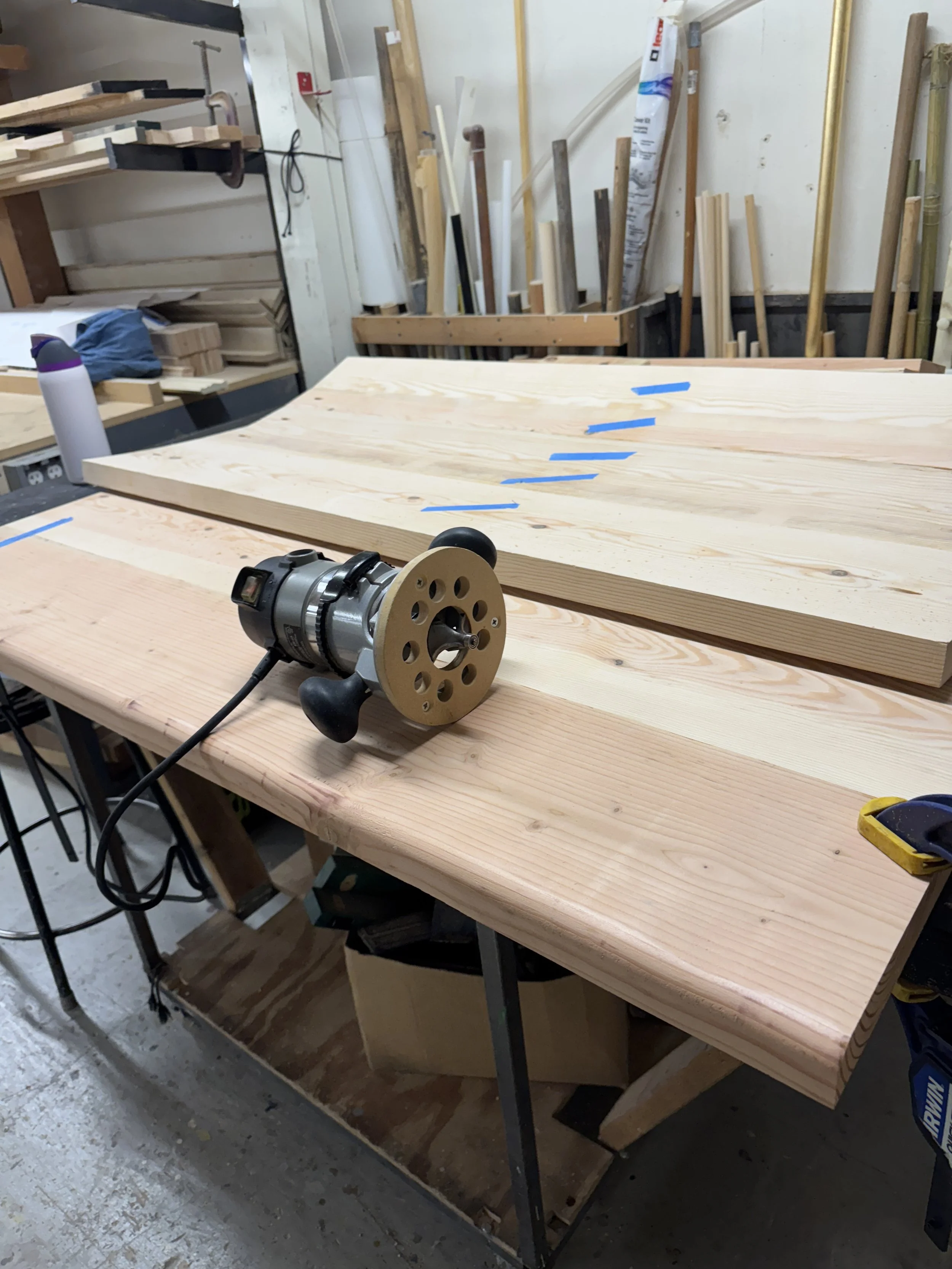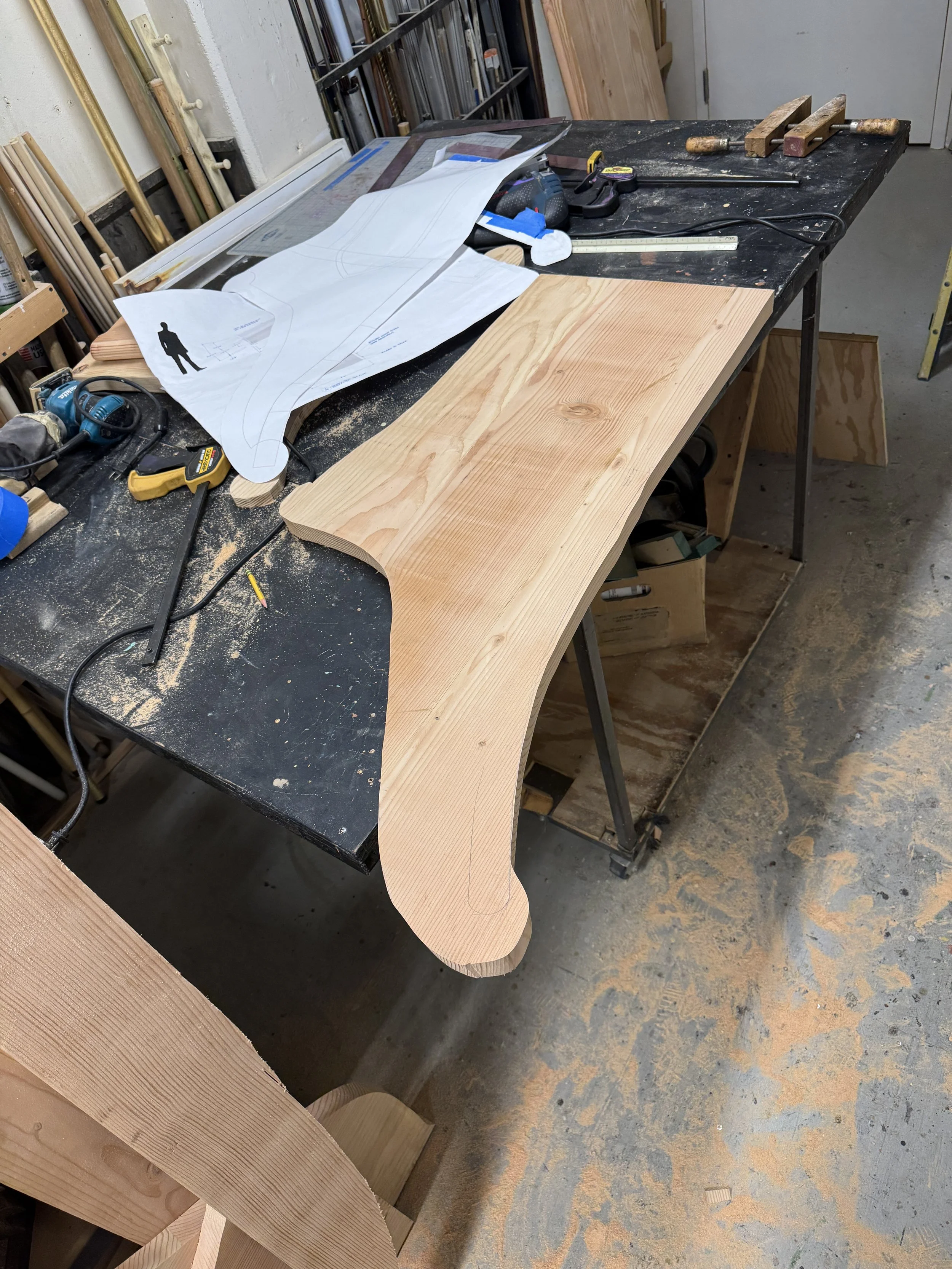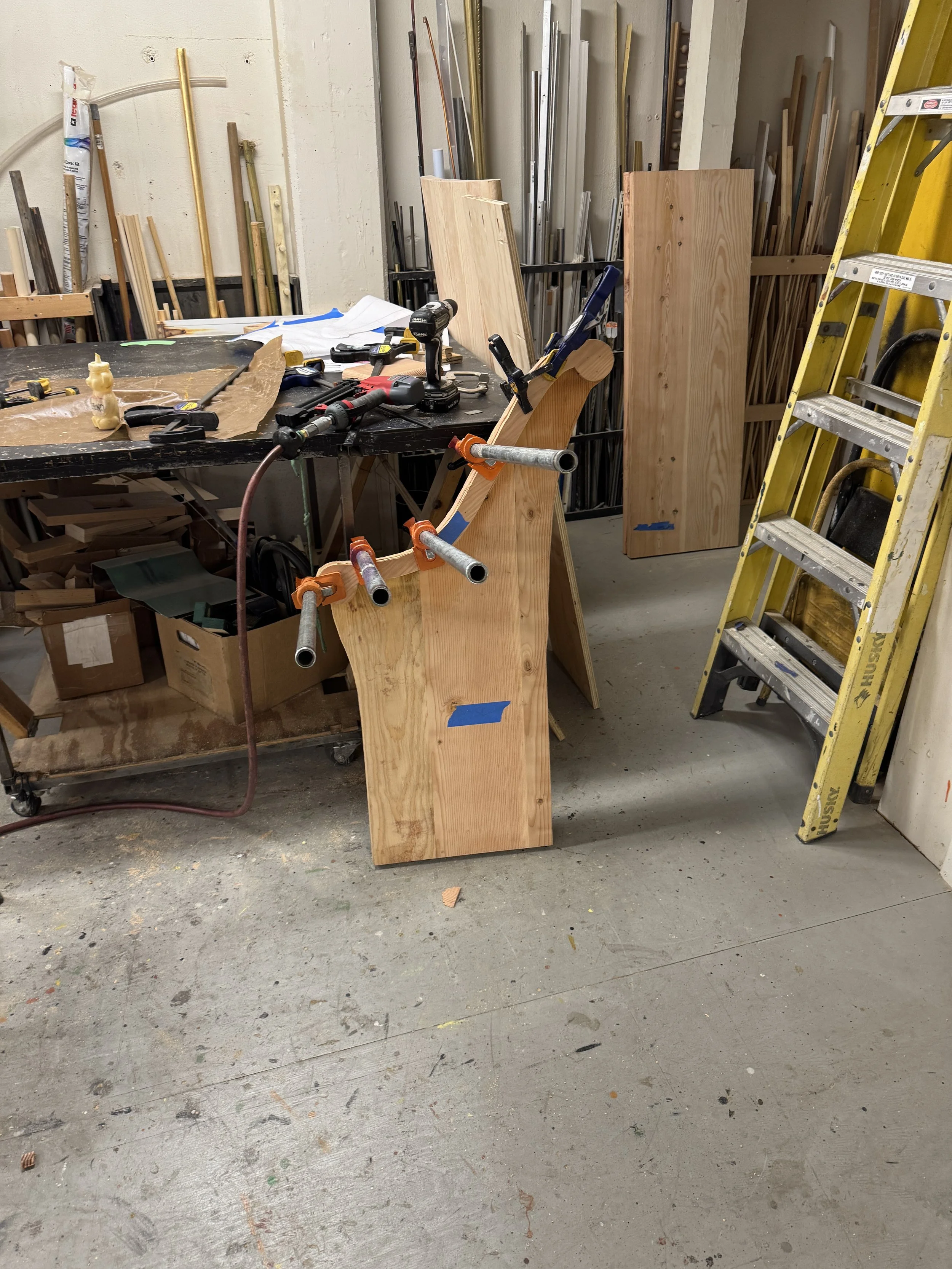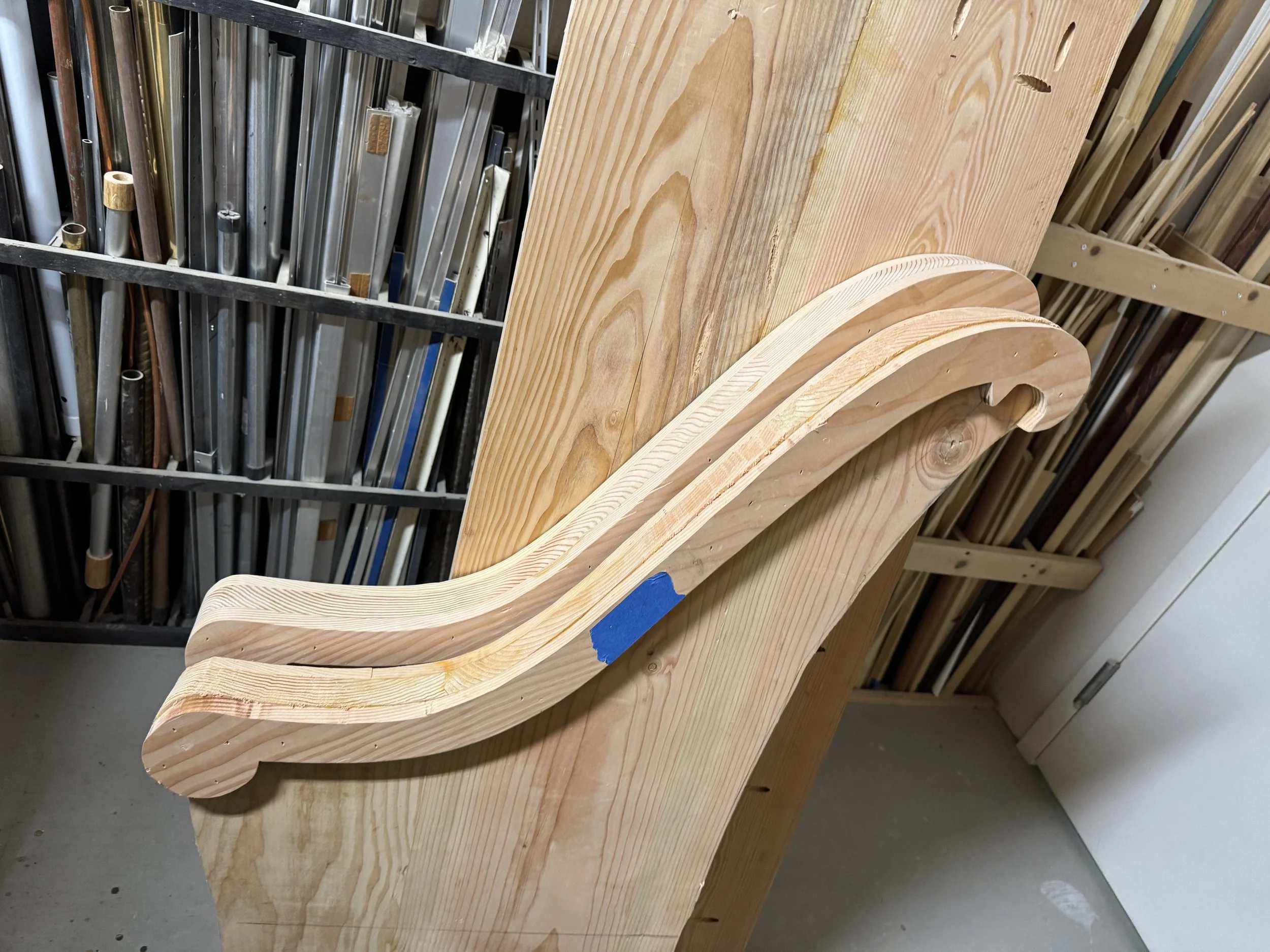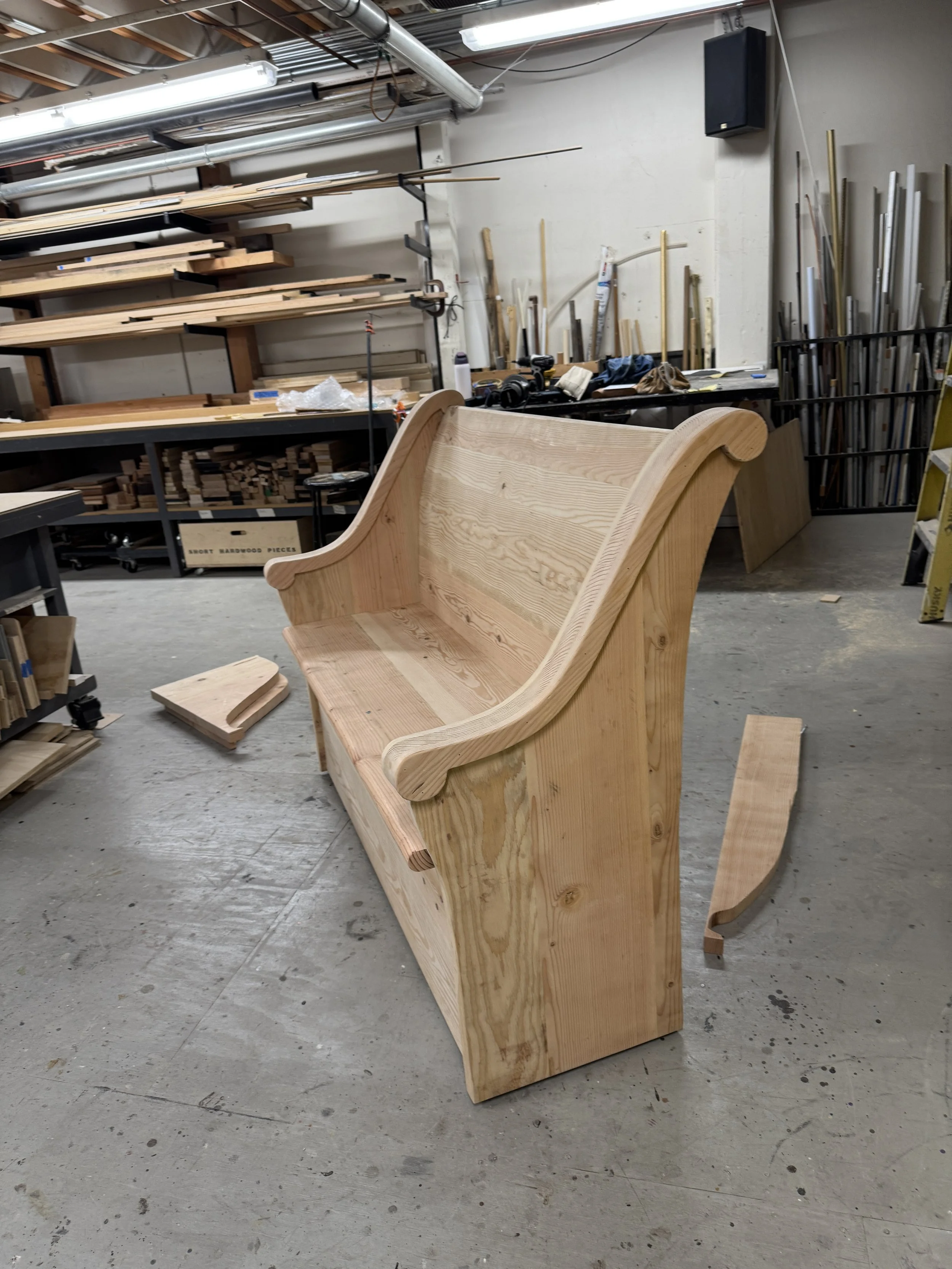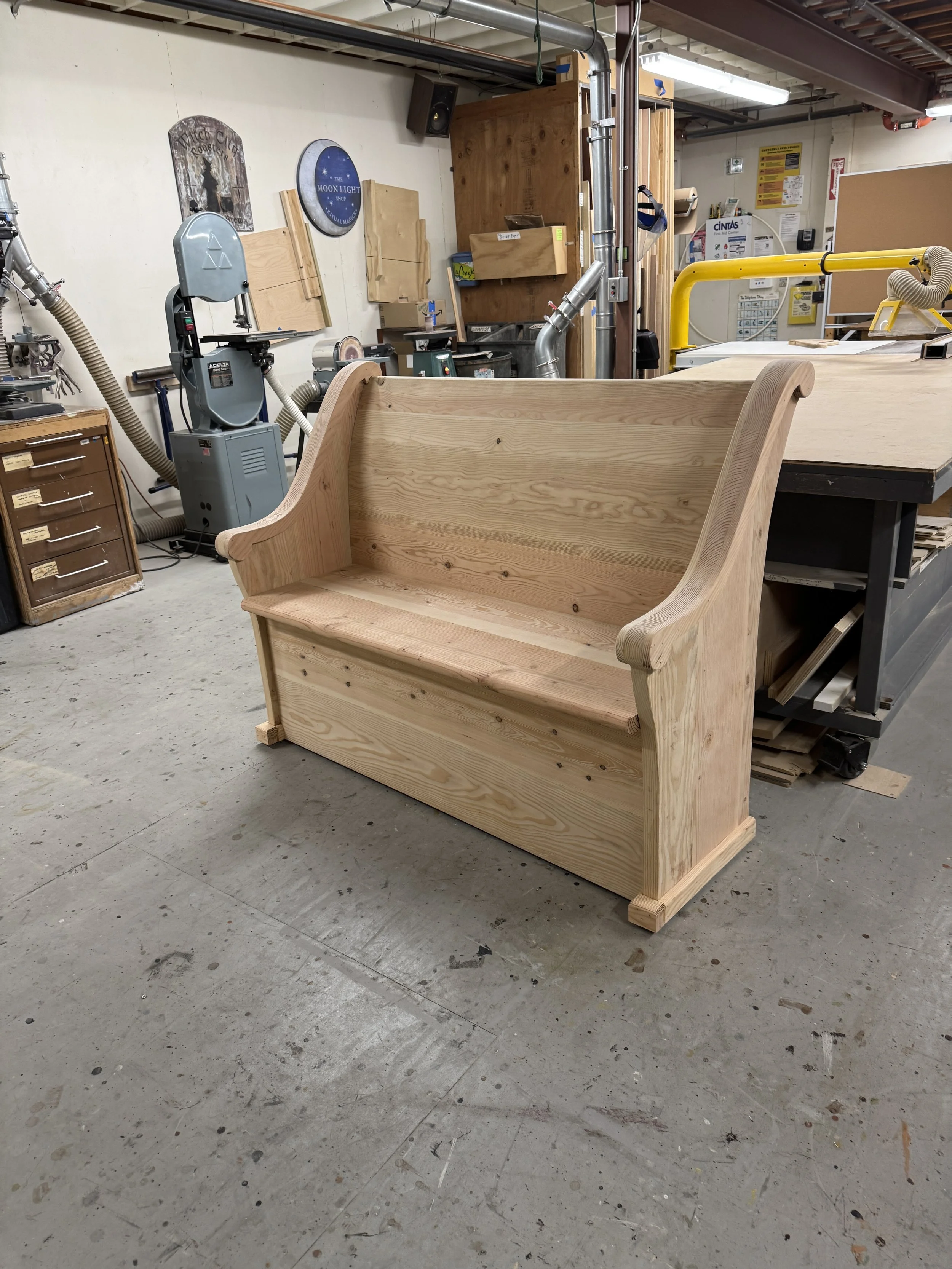Church Pew - The Thing About Jellyfish
With Berkeley Repertory Theatre
Designed by: Derek McLane
My second large project at Berkeley Rep was a church pew for The Thing About Jellyfish. Because we couldn’t get 2”x24” lumber, I biscuit joined multiple 2”x10”s together. A new challenge was building a curve into the back of the bench. I achieved this by approximating the angles at which several pieces of wood would need to connect at using Auto CAD, and then cutting them at those angles on the table saw. I then joined each piece with a biscuit joiner, built a frame, and glued and rachet strapped them together. Once they were ready, I used a belt sander to create a nice, smooth curve. After this, I moved on to the sides, which required me to do some rather sculptural work with a jigsaw and sander. Finally I was able to join the pieces all together with pocket holes. Additionally, this piece was intended to track across the stage with automation, so I worked with the scenic team to determine where to attach casters for it to drive smoothly, and not be too wobbly.
Unfortunately, this piece was cut from the show after I finished assembling it.
Despite this piece being cut from the show, during a short period of downtime I was able to complete staining it later as a learning opportunity. Creating fake wood stain was another challenge. The goal was to create a real-looking wood stain that imitated a cherry red, that appears to bring out the natural colors of wood without covering up the real grain. I closely examined a stain sample to find the layers of color that make it so rich and complex. I mixed a 4 step imitation wood stain. Step 1 was a simple wash of dark brown paint and water, to deepen the natural grain. Step 2 was a brownish yellow, a mixture of low lustre sealer, some water, and yellow and brown paint. Step 3 was a deep red-brown, made up of mostly low lustre sealer and burnt sienna. Step 4 was a mixture of low lustre and gloss sealer, and van dyke brown.
The painting process was also challenging, as I worked out how to brush and wipe away paint to prevent it from looking too “brushy.” Painting evenly across such a long, wide surface was difficult, as was painting into the corners of the bench. I found that for the more watery layers, I could simply brush and wipe away, but for the last two, I needed to take extra care with long, even brush strokes, and to dry brush over it to reduce the visible brush strokes. This helped to make it look more like a real wood stain, and kept the original beautiful grain of the wood visible!

